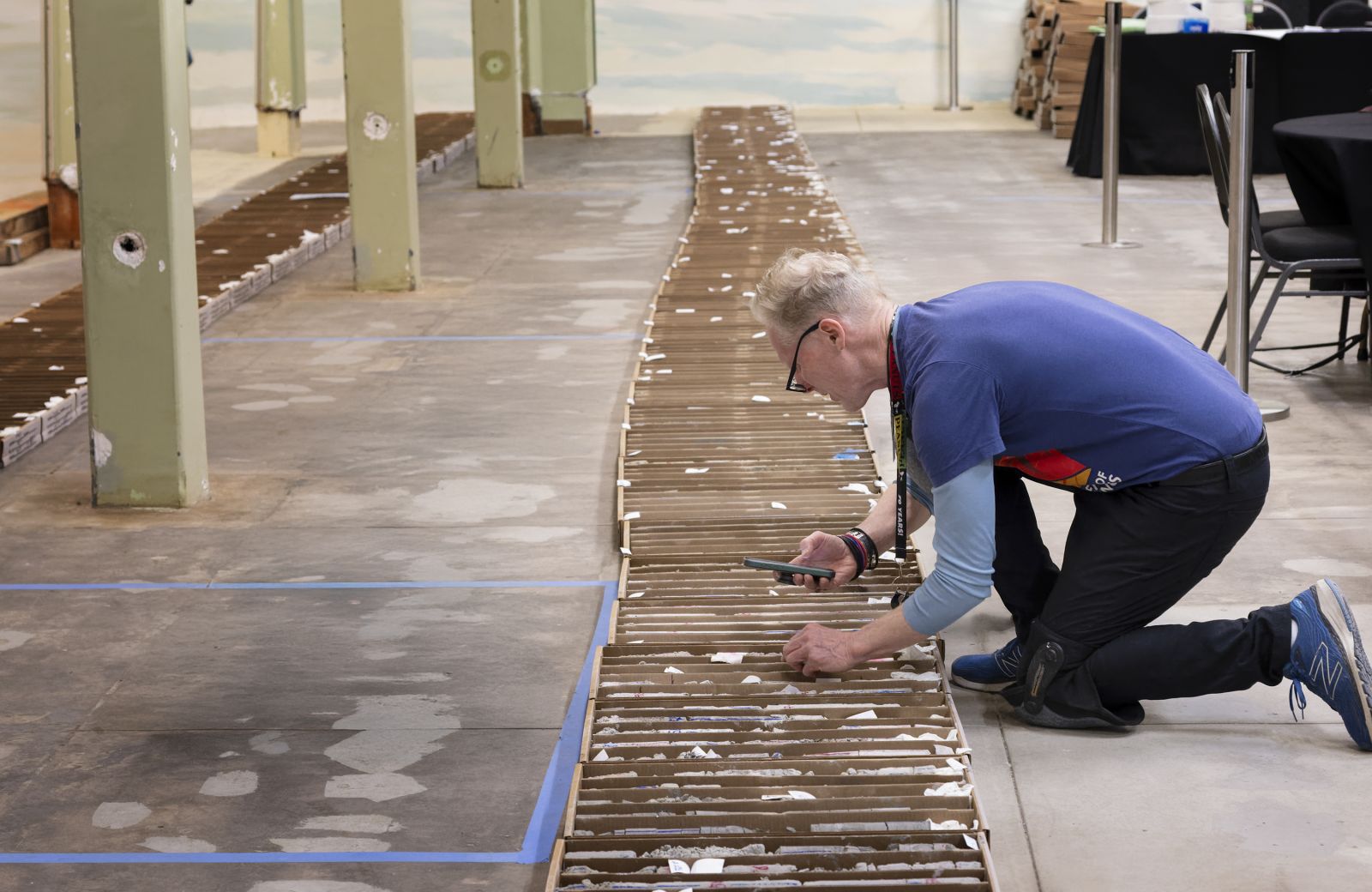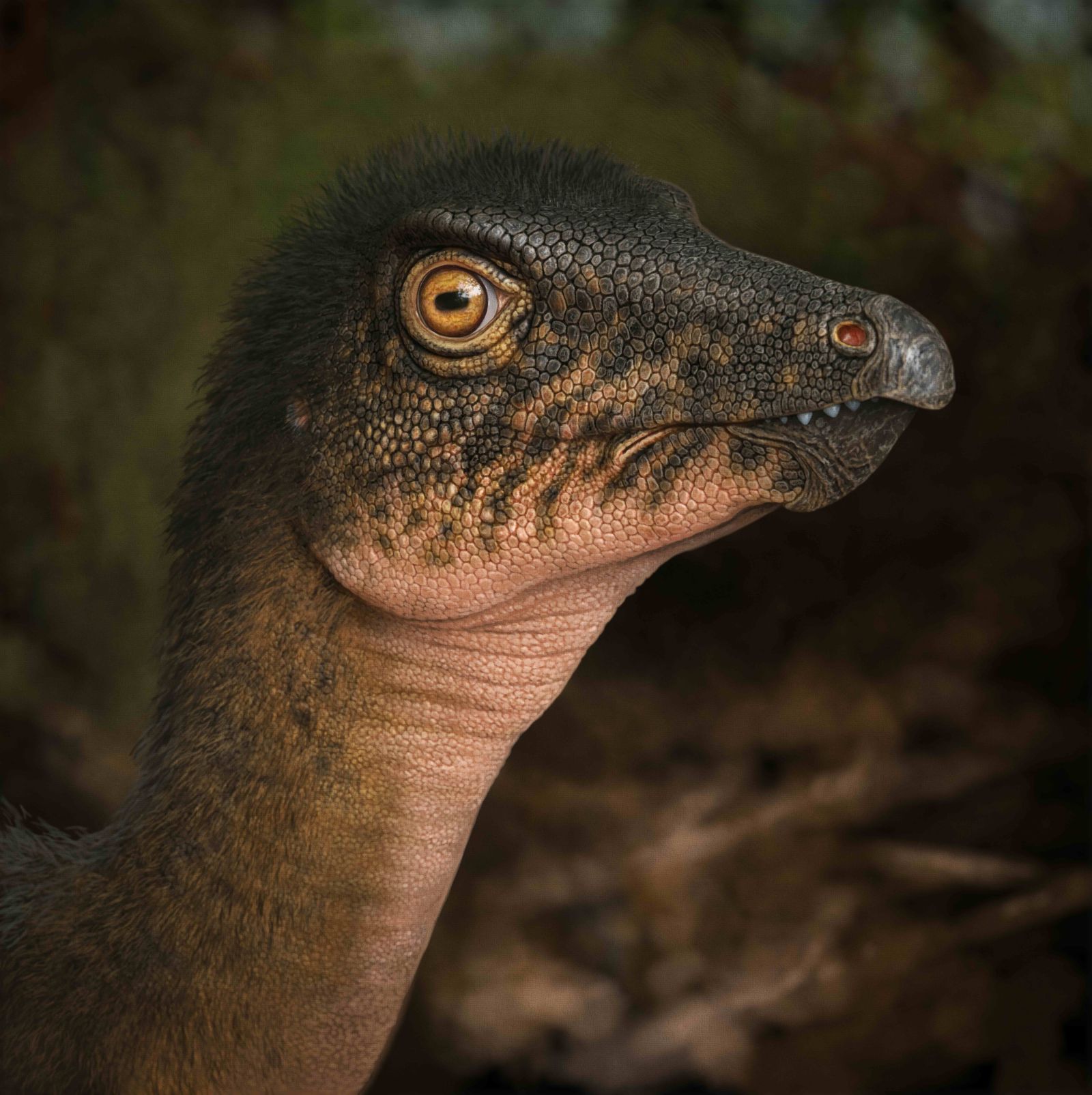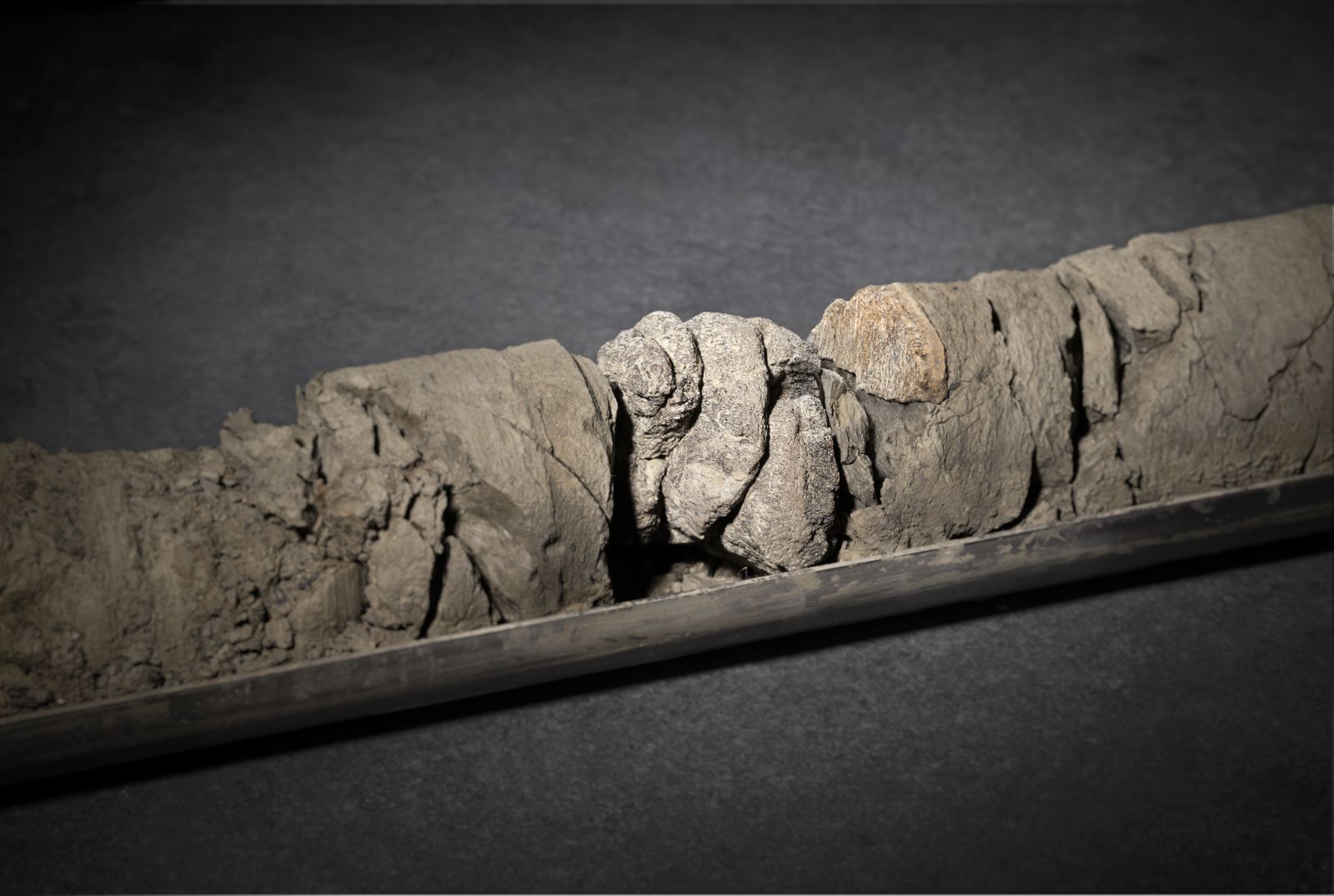🦖 Unusual: This museum finds a dinosaur fossil... under its parking lot!
Published by Cédric,
Article author: Cédric DEPOND
Source: Rocky Mountain Geology
Other Languages: FR, DE, ES, PT
Article author: Cédric DEPOND
Source: Rocky Mountain Geology
Other Languages: FR, DE, ES, PT
Follow us on Google News (click on ☆)
The initial research aimed to study the feasibility of a geothermal system to heat the museum. But when analyzing the drill cores, scientists identified a herbivore vertebra, an unexpected witness to the dinosaur era.

Dr. James Hagadorn examines scientific cores at the Denver Museum of Nature & Science.
Image Rick Wicker
An improbable discovery
The fossil, found at a depth of 760 feet (232 meters), is the oldest ever unearthed in the region. According to experts, its location in an urban area makes this discovery exceptional. Only two other similar finds have been documented worldwide.
The analyses published in Rocky Mountain Geology suggest it belonged to an ornithopod, a small herbivorous dinosaur. This specimen lived shortly before the Cretaceous mass extinction, providing valuable insight into local biodiversity.

Image of a herbivorous ornithopod dinosaur, Thescelosaurus, from the Late Cretaceous, nearly 67 million years ago. These bipedal animals, about 10 to 12 feet (3 to 3.6 meters) long, roamed tropical swamps, forests, and floodplains where Denver now stands. Their vertebrae are similar to those found in the rock core located deep beneath the museum.
The surrounding rock indicates a swampy environment rich in vegetation. This discovery confirms that Denver was once home to tropical ecosystems, quite different from today's mountainous landscapes.
A project with multiple benefits
The geothermal project, funded by a $250,000 grant, pursued a dual objective: assessing the museum's energy transition while studying the region's deep geology. This work not only revealed the fossil but also provides valuable data about the sedimentary layers of the Denver Basin.
Researchers continue to examine samples for possible additional fossils. Although fragmentary, this remnant highlights the scientific potential of deep sedimentary layers.

Partial dinosaur bone recovered from the scientific core, drilled 760 feet (232 meters) beneath the museum parking lot surface. The specimen is preserved at the Denver Museum of Nature & Science.
Image Rick Wicker
For paleontologists, this find illustrates the persistence of mysteries buried beneath our feet. It also reminds us that scientific advances sometimes emerge from projects with very different objectives.